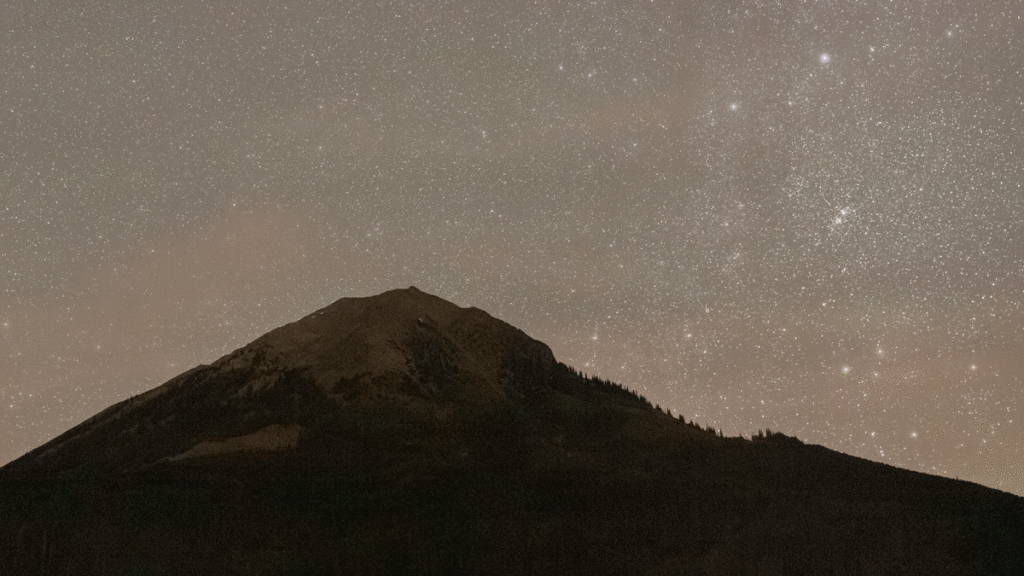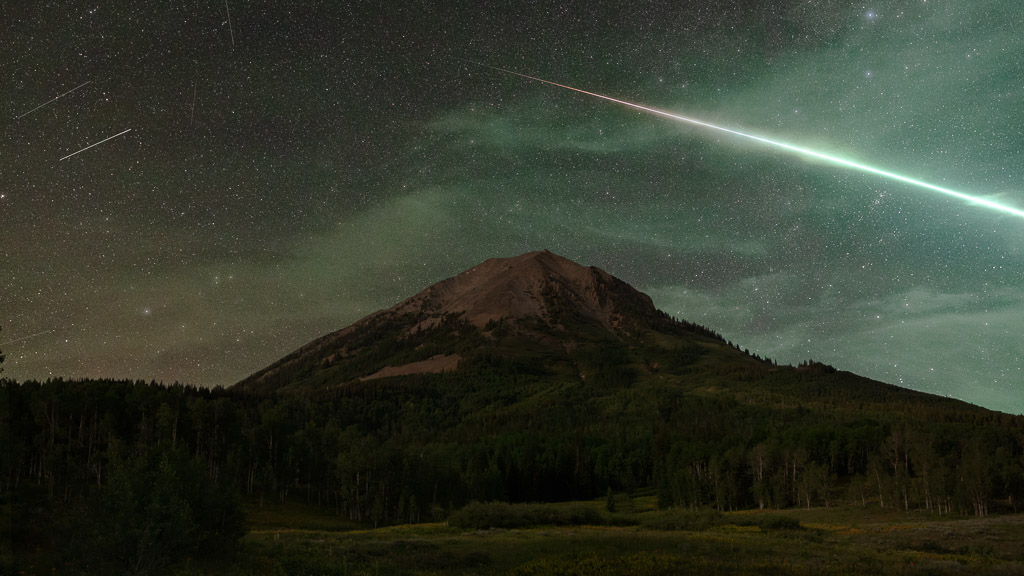Meteors–often called ‘shooting stars’–can be quite a sight to see and photograph, especially when one is large enough to light up the entire night sky. Just after midnight on July 25, 2023, a significant meteor tracked from the north to east over central Colorado, and illuminated the sky in a brilliant emerald green color; a ‘fireball’. Although many meteors can burn green (the color depends upon the content of what is burning), space junk also often burns green (magnesium) and is very spectacular to witness, owing to the size of the objects (compared to the typical sand to pebble-sized meteors). When fireballs or bolide meteors occur, they are often visible across one or several states.
In my quest to capture Starlink satellites flaring at their highest orbits just above the sun, I was capturing timelapses with two different cameras and had just finished setting up the second camera when the meteor occurred. Regrettably I had headed under a shade tent for some IPA-flavored water when it occurred, and only vaguely remember seeing a flash in my peripheral vision. You can see a lot at night if you are up late enough and watching, but owing to the darkness and our poor human vision, you usually need to be looking in the right direction to see it! Well, shucks.
Anyway, AMS Event #3772-2023 was witnessed by a dozen or so people across CO who reported it, and there is one other image of it listed on their website, from a fellow night photographer who often captures timelapses from Crestone, CO. I’ve seen some fireballs and bolide meteors and captured quite a few, but this meteor was on a different level, likely due to my relatively close proximity to its start point. The first image below I put together to roughly determine tracking (even though my 28mm lens only captured the first half), and the second to observe how bright the illumination upon the landscape was. The second animated GIF was constructed with a normal sky field so that the brightness of the meteor didn’t influence how bright the landscape appeared during the meteor; it goes back and forth between a normal night sky exposure with only a bit of detail in the foreground, and one with a greenish cast to the landscape from the meteor, with some weak shadows and increased detail apparent in the darker trees.
Even after 6 or 7 years of dedicating much time and energy to shooting at night, just yesterday my better half asked me why I “like standing around in the cold/wind/weather in the middle of the night”. I thought it funny because I don’t think anyone actually enjoys sometimes being frozen all the way through (this often happens in the desert in the Spring), but this image fully explains my drive to capture the world at night:
Daytime is mostly static and observed by nearly all; the sun rises, there usually are some clouds, occasionally there is great light, rarely an eclipse, and then the sun sets.
During nighttime you get the entire range of light that our solar system has to offer, between the moment the sun sets (the twilights) and the light from the sun starts to fade, until true ‘night’ when the light from the sky is mostly static until dawn. Static, except for the fact that during night, myriad astronomical occurrences become visible that are–in the daytime–obscured by the blinding visible radiation from our sun:
- We can directly observe the effect of the rotation of the earth within our solar system exhibited by the stars and planets moving throughout the night;
- We can often capture airglow and infrequently aurora, the energetic effects of our star’s electromagnetic radiation upon our atmosphere;
- We can often see meteors, occasionally comets;
- We can, quite literally, observe Time, since the light we are seeing originated in the past a handful of minutes ago from the sun, to ~100k light years for our Milky Way Galaxy, up to ~2.5m years for Andromeda Galaxy, the only thing outside our own galaxy that we can see from the northern hemisphere with our poor human night vision.



